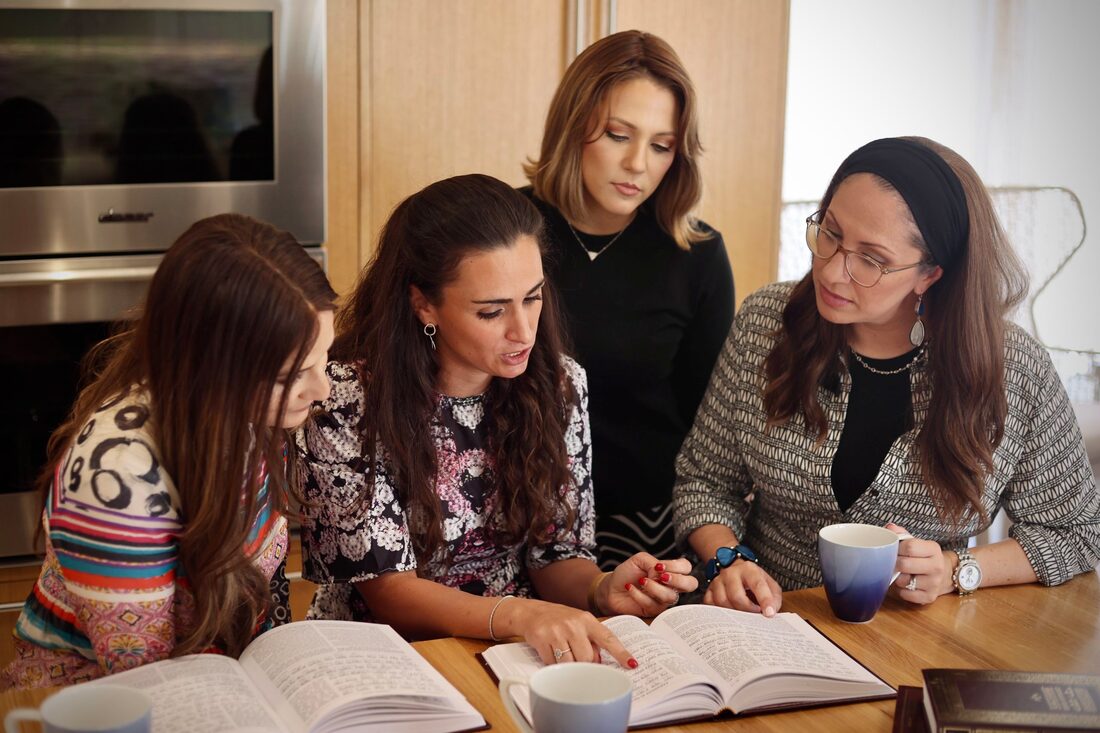 Rabbi David Etengoff Dedicated to the sacred memories of my mother, Miriam Tovah bat Aharon HaKohane, father-in-law, Levi ben Yitzhak, sister, Shulamit bat Menachem, sister-in-law, Ruchama Rivka Sondra bat Yechiel, Chana bat Shmuel, Yehonatan Binyamin ben Mordechai Meir Halevi, Tikvah bat Rivka Perel, Gittel Malka bat Moshe, Alexander Leib ben Benyamin Yosef, the Kedoshimof Har Nof, Pittsburgh, and Jersey City, the refuah shlaimah of Mordechai HaLevi ben Miriam Tovah, and the health and safety of our brothers and sisters in Israel and around the world. The concluding pasukim of a parasha often serve as a summation of one or more of the subjects contained therein. In his Commentary on the Torah, the Alshich Hakadosh (Rav Moshe Alschich,1508-1593) notes that this approach is not followed in our sidrah, as the final verse is disassociated from all preceding pasukim: “When Moshe would come into the Tent of Meeting (Ohel Moade) to speak with Him, he would hear the Voice (va’yishma et HaKol) speaking to him from the two cherubim above the covering which was over the Ark of Testimony (Aron HaEidut), and He spoke to him (va’yidabare aluv).” (Sefer Bamidbar 7:89, this and all Tanach translations, The Judaica Press Complete Tanach): Behold, this verse does not appear to have any connection to that which comes before or after. Since this is the case, I would like to borrow a phrase from Rashi’s Commentary on the Torah on Sefer Bereishit 1:1: “ain hamikra hazeh omare elah darshani—this text certainly calls for a thoroughgoing analysis.” The expression, “Ohel Moade,” is used numerous times in Shemot, Vayikra, Bamidbar and Devarim—without a precise definition. As such, its identity is often confused with the Mishkan. This leads the Abarbanel (Rabbi Don Yitzchak ben Yehudah Abarbanel 1437–1508), in his Commentary on the Torah on our pasuk, to clarify this term: “The Ohel Moade is the sanctuary, [and a section within the Mishkan,] where we find the Shulchan, Menorah and the Mizbeach HaKetoret (the altar upon which the incense was offered).” The Kodesh Kedoshim (Holy of Holies) was behind the Ohel Moade, and the area from which Moshe would hear “HaKol speaking to him from the two cherubim above the covering which was over the Aron HaEidut” when he was standing in the Ohel Moade. Hakol refers to the Voice of Hashem that Rashi and most commentators explain as “HaKol sh’nidabare imo b’Sinai—the Voice with which He [Hashem] spoke with him at Mount Sinai.” In his Commentary on the Torah on our verse, the Sforno (Rav Ovadiah ben Ya’akov, c. 1470–c. 1550) explains the unique manner of Moshe’s communications with the Almighty: “When Moshe would come into the Ohel Moade to speak with Him, he would hear the Voice (va’yishma et HaKol) …” and this did not take place in the first Beit HaMikdash, and certainly not in the second Beit HaMikdash. For no other navi was ever able to walk into the Mikdash to prophesize and immediately obtain his prophecy… The Sforno’s insight is congruent with one of the Rambam’s (Maimonides, 1135-1204) analyses of the matchless nature of nevuat Moshe Rabbeinu as found in his 13 Principles of Faith: And the fourth difference is that prophetic visions did not come to any of the [other] prophets according to their will, but only according to the will of Hashem … Moshe, our teacher, however, [could receive prophecy] at any time he so desired. [This is clearly illustrated in Sefer Bamidbar 9:8:] “Wait and I will hear what Hashem commands for you…” (Perush HaMishnayot, Sanhedrin 10, Principle Seven, Rabbi David Kapach Hebrew translation of the Arabic, English translation my own) The final words of our pasuk, “and He spoke to him (va’yidabare aluv),” are understood by Rashi as Hashem speaking exclusively to Moshe in such a manner as “to exclude Aharon from the divine statements.” A very different and daring approach, however, is offered by Rabbeinu Bahya ben Asher ibn Halawa (1255–1340) in his Commentary on the Torah on our pasuk: It is possible to explain, “va’yidabare aluv,” as “and Moshe spoke to Him.” This comes to teach us the greatness of Moshe in contrast to all other prophets, for he was neither reluctant nor frightened to respond directly to the Almighty. As we find in the verse: “Then Hashem would speak to Moshe face to face (panim el panim), as a man would speak to his companion…” (Sefer Shemot 33:11), for it is the manner of a person who is speaking to their friend for one to speak and one to answer. So, too, does it state in our verse, HaKol would speak to Moshe from the two cherubim above the covering which was over the Aron HaEidut, and he [Moshe] would then speak to Hashem at any time he so desired. In sum, Moshe emerges as the greatest prophet who has ever and will ever live, for he, alone, spoke to Hashem panim el panim, “as a man would speak to his companion,” at any time he so desired. Little wonder, then, that we find in the Yigdal hymn: “In Israel none like Moses arose again…” (Translation, The Complete ArtScroll Siddur, page 14) Shabbat Shalom Past drashot may be found at my blog-website: http://reparashathashavuah.org. Please contact me at [email protected] to be added to my weekly email list. *** My audio shiurim on the topics of Tefilah and Tanach may be found at: http://tinyurl.com/8hsdpyd *** I have posted 164 of Rabbi Soloveitchik’s English language audio shiurim (MP3 format) spanning the years 1958-1984. Please click on the highlighted link: The Rav
0 Comments
 Rabbi David Etengoff Dedicated to the sacred memories of my mother, Miriam Tovah bat Aharon HaKohane, father-in-law, Levi ben Yitzhak, sister, Shulamit bat Menachem, sister-in-law, Ruchama Rivka Sondra bat Yechiel, Chana bat Shmuel, Yehonatan Binyamin ben Mordechai Meir Halevi, Tikvah bat Rivka Perel, Gittel Malka bat Moshe, Alexander Leib ben Benyamin Yosef, the Kedoshim of Har Nof, Pittsburgh, and Jersey City, the refuah shlaimah of Mordechai HaLevi ben Miriam Tovah, and the health and safety of our brothers and sisters in Israel and around the world. Chazal describe Shavuot as zman matan Torateinu, the time when Hashem gave us His holy Torah. The world-shaping significance of our subsequent acceptance of the Torah (kabbalat haTorah) is given powerful voice in Midrash Tanchuma, Parashat Bereishit I: And it is taught in a baraita, Rabbi Shimon ben Lakish said: “Why does it say in [the verses depicting] the Creation of the Universe, day one (yom echad), second day (yom shani), third day (yom shlishi), fourth day (yom revi’i), fifth day (yom chamishi), sixth day (yom hashishi), and what is the reason for the [seemingly superfluous] letter “heh” [in yom hashishi]? [After all,] in all other instances the text only states, yom echad, yom shani and so on. This is coming to teach us that the Holy One blessed be He stated this condition to the entire Universe: ‘If the Jewish people will accept the Torah that is comprised of five books [hinted at by the numerical value of the letter heh =5], then all will be good [that is, all that has been created will continue to exist]. If not, however, I will return everything that exists to its pre-Creation state--tohu vavohu.’” (Translation my own) According to this midrash, the continuation of the Universe was contingent upon the Jewish people accepting the Torah. Little wonder, then, that Chazal consistently emphasize the singular import of Torah study. One of the best-known examples that gives voice to this idea is Talmud Bavli, Shabbat 127a: These are the matters that a person does them and enjoys their profits in this world, and nevertheless the principal exists for him for the World-to-Come, and they are: Honoring one’s father and mother, and acts of loving kindness, and bringing peace between a person and another, and Torah study is equal to all of them--v’talmud Torah k’neged kulam. (All Talmud translations, The Koren Talmud Bavli, translation, Rabbi Adin Even-Israel Steinsaltz zatzal) If talmud Torah is k’neged kulam, what is the nature of the relationship between Torah study and other mitzvot? This crucial question is addressed in Talmud Bavli, Kiddushin 40b: And there already was an incident in which Rabbi Tarfon and the Elders (zekanim) were reclining in the loft of the house of Nit’za, in Lod, when this question was asked of them: Is study greater (talmud gadol) or is action greater (ma’aseh gadol)? Rabbi Tarfon answered and said: Action is greater. Rabbi Akiva answered and said: Study is greater. Everyone answered and said [that is, the consensus was]: Study is greater, but not as an independent value; rather, it is greater, as study leads to action--talmud gadol sh’hatalmud mavi l’yedei ma’aseh. Rashi (1040-1105) interprets the concluding phrase of our passage, “talmud gadol sh’hatalmud mavi l’yedei ma’aseh,” as: “nimtzau shneihem b’yado—both Torah study and action will be within his grasp.” According to this approach, since talmud Torah enables the proper fulfillment of mitzvot actions, it complements ma’aseh. In other words, while Rabbi Tarfon champions the notion ma’aseh gadol, and Rabbi Akiva ostensibly argues and states, “talmud gadol,” they are not actually in disagreement. Instead, both of these Torah giants agree that study is greater, but not as an independent value; rather, it is greater because it leads to action. In his Chidushei Aggadot on Kiddushin 40b, the Maharal of Prague (Rabbi Yehudah Loew ben Bezalel, 1512 ca-1609) advances our understanding of the ultimate value of mitzvot actions: Ma’aseh gadol: [This statement of Rabbi Tarfon] means that action is indispensable, whereas the Torah that one learns in order to perform [a particular act] is not as fundamental as the ma’aseh [itself], as the ideal outcome [of Torah study] is the proper fulfillment of [the mitzvot]. This is the case, since man is not exclusively an intellectual entity, for, [only if he was] completely cerebral would his Torah be his very being… therefore, action is the essence [of humankind] … (Translation and brackets my own) According to the Maharal, while talmud Torah is a central part of Jewish living and a powerful component of our intellectual makeup, it is nonetheless insufficient if it does not lead to mitzvot observance. This is congruent with the well-known axiom in Pirkei Avot: “v’lo hamidrash ikkar elah hama’aseh—Torah study is not the essence, but rather, the deed.” (1:17) With Hashem’s help, may we be zocheh to attain the ideal stated by Rabbi Yishmael, son of Rabbi Yossi: “V’halomed al manat la’asot—And one who learns in order to do is given the opportunity to learn, teach, observe and do.” (Pirkei Avot 4:5, translation, Rabbi Yosef Marcus). V’chane yihi ratzon. Shabbat Shalom and Chag Sameach, Past drashot may be found at my blog-website: http://reparashathashavuah.org. Please contact me at [email protected] to be added to my weekly email list. *** My audio shiurim on the topics of Tefilah and Tanach may be found at: http://tinyurl.com/8hsdpyd *** I have posted 164 of Rabbi Soloveitchik’s English language audio shiurim (MP3 format) spanning the years 1958-1984. Please click on the highlighted link: The Rav  Rabbi David Etengoff Dedicated to the sacred memories of my mother, Miriam Tovah bat Aharon HaKohane, father-in-law, Levi ben Yitzhak, sister, Shulamit bat Menachem, sister-in-law, Ruchama Rivka Sondra bat Yechiel, Chana bat Shmuel, Yehonatan Binyamin ben Mordechai Meir Halevi, Tikvah bat Rivka Perel, Gittel Malka bat Moshe, Alexander Leib ben Benyamin Yosef, the Kedoshim of Har Nof, Pittsburgh, and Jersey City, the refuah shlaimah of Mordechai HaLevi ben Miriam Tovah, and the health and safety of our brothers and sisters in Israel and around the world. Sefer Vayikra is the only book in the Tanach where we find the expression, “v’yarata m’elokecha,” (“and you shall have awe for your G-d”). It appears three times in Parashat Behar and twice in Parashat Kedoshim: 1) You shall not curse a deaf person. You shall not place a stumbling block before a blind person, and you shall have awe for your G-d. I am Hashem. (19:14) 2) You shall rise before a venerable person and you shall respect the elderly, and you shall have awe for your G-d. I am Hashem. (19:32) 3) And you shall not wrong, one man his fellow Jew, and you shall have awe for your G-d, for I am Hashem, your G-d. (25:17) 4) You shall not take from him interest or increase, and you shall have awe for your G-d, and let your brother live with you. (25:36) 5) You shall not work him with rigor, and you shall have awe for your G-d. (25:33, these and all Tanach and Rashi translations, The Judaica Press Complete Tanach, underlining my own) Our five verses refer respectively to: the prohibition of purposely misleading someone to your own financial advantage (lifnei ivare), the obligation to rise before and treat the elderly with respect (mipnei saivah takum), the injunction against vexing your fellow Jew through painful words (ona’at devarim), the ban against charging interest to a fellow Jew (rivet) and the sanction against mistreating a Jewish slave by forcing he or she to perform worthless and unpleasant work (avodah b’farech). Although at first glance, these mitzvot seem to be disconnected, Rashi (1040-1105), basing himself upon the Sifra, the halachic Midrash to Sefer Vayikra, teaches us that v’yarata m’elokecha links these pasukim closely together: and you shall fear your G-d: [Why is this mentioned here?] Because this matter [of misadvising someone] is not discernible by people, whether this person had good or evil intentions, and he can avoid [being recriminated by his victim afterwards] by saying, “I meant well!” Therefore, concerning this, it says, “and you shall have awe for your G-d,” Who knows your thoughts! Likewise, concerning anything known to the one who does it, but to which no one else is privy, Scripture says, “and you shall have awe for your G-d.” (Commentary to Sefer Vayikra 19:14, underlining my own) In sum, Rashi maintains that since each of the actions referenced in our pasukim is indiscernible by people, their underlying intentions remain unknown to observers. Therefore, only the active party knows the truth as to whether or not they were performed for the benefit of others or to their detriment. Nothing, however, is hidden from the Almighty, including our very thoughts. As such, one must be continuously in awe of the Master of the Universe and meticulous in his/her mitzvot observance. In his trenchant analysis of our verses, the great Chasidic rebbe, Rabbi Yehudah Aryeh Leib Alter (1847-1905), known as the “Sefat Emet” after the name of his commentary on the Torah, expands upon Rashi’s gloss with a profound insight into the power of mitzvah actions to engender yirat Hashem: It is obvious that through awe [of G-d] one is able to properly fulfill those matters that are indiscernible by others. [What is less evident,] however, is that these mitzvot which are solely contingent upon one’s private intentions, will, through their proper performance, enable one to acquire awe [of the Almighty]. This is the case, since when each mitzvah is fulfilled, it alters a person’s actions in a positive fashion. As such, these mitzvot that are contingent upon a person’s innermost thoughts, [when performed correctly,] will repair [any negativity that lurks] in the mind of the one [who performs such a commandment]. So, too, did I hear from my teacher and rebbe [the “Chidushei HaRim, 1798-1866] zatzal, on the verse, “And you shall not wrong, one man his fellow Jew, and you shall have awe for your G-d, for I am Hashem, your G-d.” (Sefer Vayikra 25:17) As he noted, through punctiliously refraining from vexing one’s fellow Jew, one will merit [the characteristic of] awe before the Almighty… (Translation and brackets my own) May our heartfelt fulfillment of Hashem’s mitzvot lead us to awe before Him, bringing us ever closer to His holy Torah. V’chane yihi ratzon. Shabbat Shalom Past drashot may be found at my blog-website: http://reparashathashavuah.org. Please contact me at [email protected] to be added to my weekly email list. *** My audio shiurim on the topics of Tefilah and Tanach may be found at: http://tinyurl.com/8hsdpyd *** I have posted 164 of Rabbi Soloveitchik’s English language audio shiurim (MP3 format) spanning the years 1958-1984. Please click on the highlighted link: The Rav |
Details
Archives
July 2024
AuthorTalmid of Rabbi Soloveitchik zatzal Categories |
- Blog: Rabbi David Etengoff: Parashat HaShavuah
- Sefer Bereishit 5784&5785
- Sefer Shemot 5784&5785
- Sefer Vayikra 5784&5785
- Sefer Bamidbar 5784 &5785
- Sefer Bereishit 5782&5783
- Sefer Shemot 5782&5783
- Sefer Vayikra 5782&5783
- Sefer Bamidbar 5782&5783
- Sefer Devarim 5782&5783
- Sefer Bereishit 5780& 5781
- Sefer Shemot 5780&5781
- Sefer Vayikra 5780&5781
- Sefer Bamidbar 578&5781
- Sefer Devarim 578&5781
- Sefer Bereishit 5778&5779
- Sefer Shemot 5778&5779
- Sefer Vayikra 5778&5779
- Sefer Bamidbar 5778&5779
- Sefer Devarim 5778&5779
- Sefer Bereishit 5776&5777
- Sefer Bereishit 5774&5775
- Sefer Bereishit 5772&5773
- Sefer Bereishit 5771&5770
- Sefer Shemot 5776&5777
- Sefer Shemot 5774&5775
- Sefer Shemot 5772&5773
- Sefer Shemot 5771&5770
- Sefer Vayikra 5776&5777
- Sefer Vayikra 5774&5775
- Sefer Vayikra 5772&5773
- Sefer Vayikra 5771&5770
- Sefer Bamidbar 5776&5777
- Sefer Bamidbar 5774&5775
- Sefer Bamidbar 5772&5773
- Sefer Bamidbar 5771&5770
- Sefer Devarim 5776&5777
- Sefer Devarim 5774&5775
- Sefer Devarim 5772&5773
- Sefer Devarim 5771&5770
 RSS Feed
RSS Feed
